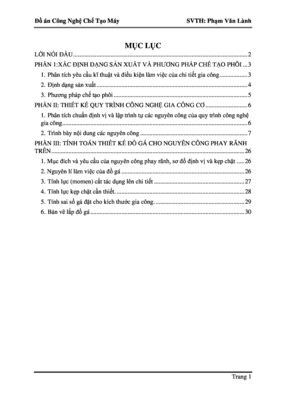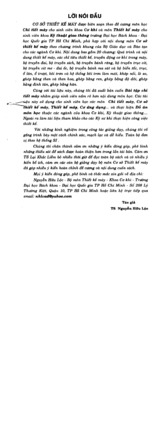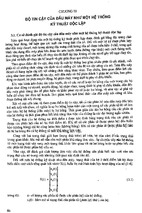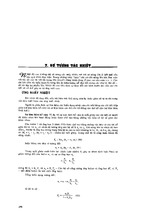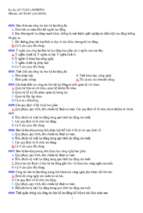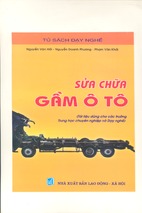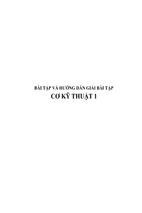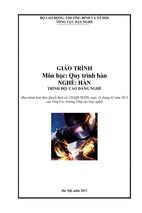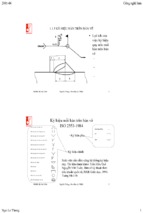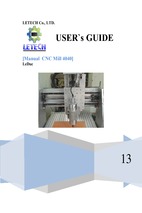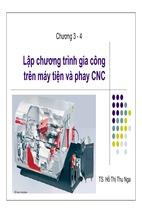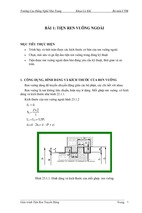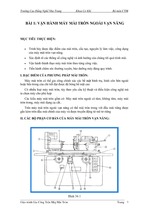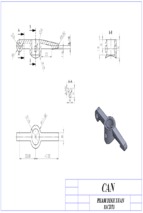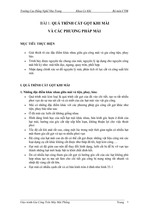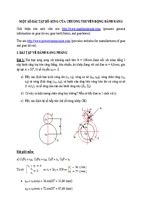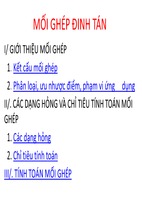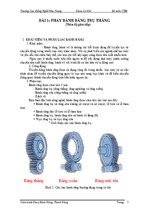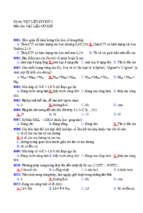CAM DESIGN
HANDBOOK
Harold A. Rothbart
Editor
Dean Emeritus
College of Science and Engineering
Fairleigh Dickinson University
Teaneck, New Jersey
McGRAW-HILL
New York Chicago San Francisco Lisbon London Madrid
Mexico City Milan New Delhi San Juan Seoul
Singapore Sydney Toronto
Copyright © 2004 by The McGraw-HIll Companies, Inc. All rights reserved. Manufactured in the
United States of America. Except as permitted under the United States Copyright Act of 1976, no part
of this publication may be reproduced or distributed in any form or by any means, or stored in a database or retrieval system, without the prior written permission of the publisher.
0-07-143328-7
The material in this eBook also appears in the print version of this title: 0-07-137757-3.
All trademarks are trademarks of their respective owners. Rather than put a trademark symbol after
every occurrence of a trademarked name, we use names in an editorial fashion only, and to the benefit
of the trademark owner, with no intention of infringement of the trademark. Where such designations
appear in this book, they have been printed with initial caps.
McGraw-Hill eBooks are available at special quantity discounts to use as premiums and sales promotions, or for use in corporate training programs. For more information, please contact George
Hoare, Special Sales, at
[email protected] or (212) 904-4069.
TERMS OF USE
This is a copyrighted work and The McGraw-Hill Companies, Inc. (“McGraw-Hill”) and its licensors
reserve all rights in and to the work. Use of this work is subject to these terms. Except as permitted
under the Copyright Act of 1976 and the right to store and retrieve one copy of the work, you may not
decompile, disassemble, reverse engineer, reproduce, modify, create derivative works based upon,
transmit, distribute, disseminate, sell, publish or sublicense the work or any part of it without
McGraw-Hill’s prior consent. You may use the work for your own noncommercial and personal use;
any other use of the work is strictly prohibited. Your right to use the work may be terminated if you
fail to comply with these terms.
THE WORK IS PROVIDED “AS IS”. McGRAW-HILL AND ITS LICENSORS MAKE NO GUARANTEES OR WARRANTIES AS TO THE ACCURACY, ADEQUACY OR COMPLETENESS OF
OR RESULTS TO BE OBTAINED FROM USING THE WORK, INCLUDING ANY INFORMATION THAT CAN BE ACCESSED THROUGH THE WORK VIA HYPERLINK OR OTHERWISE,
AND EXPRESSLY DISCLAIM ANY WARRANTY, EXPRESS OR IMPLIED, INCLUDING BUT
NOT LIMITED TO IMPLIED WARRANTIES OF MERCHANTABILITY OR FITNESS FOR A
PARTICULAR PURPOSE. McGraw-Hill and its licensors do not warrant or guarantee that the functions contained in the work will meet your requirements or that its operation will be uninterrupted or
error free. Neither McGraw-Hill nor its licensors shall be liable to you or anyone else for any inaccuracy, error or omission, regardless of cause, in the work or for any damages resulting therefrom.
McGraw-Hill has no responsibility for the content of any information accessed through the work.
Under no circumstances shall McGraw-Hill and/or its licensors be liable for any indirect, incidental,
special, punitive, consequential or similar damages that result from the use of or inability to use the
work, even if any of them has been advised of the possibility of such damages. This limitation of liability shall apply to any claim or cause whatsoever whether such claim or cause arises in contract, tort
or otherwise.
DOI: 10.1036/0071433287
Want to learn more?
,
We hope you enjoy this McGraw-Hill eBook! If you d like
more information about this book, its author, or related books
and websites, please click here.
To Florence, Ellen, Dan and Jane,
Candice, Michael, Jessica and Justine
This page intentionally left blank.
For more information about this title, click here.
CONTENTS
Contributors
Preface
ix
vii
Chapter 1. Introduction
1
Chapter 2. Basic Curves
27
Chapter 3. Modified Cam Curves
55
Chapter 4. Polynomial and Fourier Series Cam Curves
89
Chapter 5. Cam Motion Synthesis Using Spline Functions
107
Chapter 6. Elements of Cam Profile Geometry
159
Chapter 7. Geometry of Planer Cam Profiles
175
Chapter 8. Cam Mechanism Forces
217
Chapter 9. Cam Materials and Lubrication
251
Chapter 10. Cam Manufacturing
285
Chapter 11. Cam System Modeling
315
Chapter 12. Cam System Dynamics—Analysis
357
Chapter 13. Cam System Dynamics—Response
399
Chapter 14. Special Cam Mechanisms
453
Chapter 15. Cams in Microelectromechanical Systems
505
Chapter 16. Automotive Camshaft Dynamics
529
Appendix A
Appendix B
Appendix C
Appendix D
Appendix E
Appendix F
Index
Basic Contours
545
Basic Cam Curve Factors
551
Polynomial Coefficients
557
Cam Computer Software
561
CAD/CAM for a Medical Instrument Cam Mechanism
565
Optinal Control Theory Derivation for Two-Point Boundary
585
Value Problem
587
v
Copyright 2004 by The McGraw-Hill Companies, Inc. Click Here for Terms of Use.
This page intentionally left blank.
CONTRIBUTORS
G.K. Ananthasuresh Assistant Professor of Mechanical Engineering and Applied Mechanics,
University of Pennsylvania, Philadelphia, Pennsylvania (chap. 15)
Jorge Angeles
(chap. 7)
Professor of Mechanical Engineering, McGill University, Montreal, Canada
J. Jesús Cervantes-Sánchez Professor, Departamento de Ingeniera Mecanica, Universidad de
Guanajuato, Salamanca, Mexico (chap. 7)
Thomas L. Dresner
Demitri Elgin
Consulting Engineer, Mountain View, California (chap. 13)
D. Elgin Cams Co., Redwood City, California (chap. 16)
J. Christian Gerdes Assistant Professor of Mechanical Engineering, Design Division, Stanford
University, Palo Alto, California (chap. 11)
Cecil O. Huey, Jr. Professor of Mechanical Engineering Clemson University, Clemson, South Carolina (chap. 5)
Harold A. Rothbart Dean Emeritus, College of Science and Engineering, Fairleigh Dickinson
University, Teaneck, New Jersey (chaps. 1, 2, 3, 4, 6, 8, 9, 10, 12, 14)
Carlos Santiago Lopez-Cajún Professor de la Faculted, Departamento de Ingenieria, Universidad Autónoma de Querétaro, Querétaro, Mexico (chap. 7)
Dermin Tsay Professor, Department of Mechanical Engineering, National Sun Yat Sen University,
Kaohsiung, Taiwan (chap. 5)
vii
Copyright 2004 by The McGraw-Hill Companies, Inc. Click Here for Terms of Use.
This page intentionally left blank.
PREFACE
A cam is a versatile, specially shaped part of a machine that is always in contact with a
member called the follower. The name cam should not be confused with the common
abbreviation cam for camera or camcorder, both used in the fields of photography and
video, nor with the acronym CAM applied to computer-aided manufacturing, which utilizes computational facilities for machinery fabrication of all kinds.
The book is written for the designer concerned with creating or inventing a
physical or mathematical function, a motion or an action, a mechanism or a machine. It
would be valuable to the mechanical engineer, electrical engineer, physicist, and scientist
aimed at developing cam-follower systems of all kinds, sizes, and speeds. In addition, shop
machinists and toolmakers who make and assemble the machinery will find this book of
value in their work. Automobile and racing car enthusiasts should find this book helpful
in their aspirations. Last, the book can be an aid to students in engineering by introducing theoretical and practical applications of multifaceted ingenious mechanisms and
machinery.
Cam design is constantly evolving. New techniques and information are available for
cam synthesis, analysis, dynamics, and performance and the production of the actual cam
body itself. The most significant advancement of cam systems has resulted from the
application of the digital computer. Computer-aided design (CAD) and computer-aided
manufacturing (CAM) have been invaluably applied as software tools. CAD design is
downloaded to CAM in discrete increments by computer numerical control (CNC) for
actual cam production.
The content of the handbook may be considered in the following categories:
• Cam curves: basic trigonometric, modified or blended from basic curves, polynomial
curves, Fourier series curves, and spline functions
• Cam profile geometry, consisting of pressure angle, curvature, and profile analysis
• Cam hardware, including materials, lubrication, and manufacturing
• Cam system dynamics, containing the elastic follower and drive systems, vibratory
analysis, and response
This book is for use in the following fields of application:
• Industrial and commercial machinery, as a critical part of production equipment for goods
and services, for example, shoe making, steel mill equipment, and paper printing presses
• Automotive performance and optimization, as a high-speed automotive valve operating
system
• Cams in microelectromechanical systems (MEMS), for micromachinery in miniature
control systems
• Cams as analog computers
• Gadgets, mechanisms, and machinery, as inventive, ingenious devices
ix
Copyright 2004 by The McGraw-Hill Companies, Inc. Click Here for Terms of Use.
x
PREFACE
Furthermore, this book contains the latest, most important techniques and test data
available. The philosophy of the book is to present diversified applications for cams to aid
the reader’s understanding and design selection. This volume also contains many new
examples, a listing of computer software, and an extensive list of references.
It should be noted that cams, gearing, rolling-element bearings, and traction (friction)
drives are of the same basic mechanical family, the study of which is generically referred
to as contact mechanics. These devices have in common rolling and/or sliding action
coupled with reasonably high concentrated contact (Hertz) stresses. In the field of contact
mechanics the failure mechanisms among these machine elements are similar and are
related to material metallurgy and heat treatment, lubricant rheology and chemistry, surface
topography and geometry, and applied contact load (stress). These machine components
also have commonly related manufacturing requirements. Hence, they share a similar
manufacturing technology and engineering analysis.
The significance of cam profile accuracy is emphasized. A surface may appear smooth
to the eye and yet have poor dynamic properties. Depending on the application and loads
the cam profile accuracy and its surface finish may affect the life, vibration, and noise of
a cam-follower system. Poor manufacturing techniques can impede the functional ability
of a mechanism or machine. Also, the choice of a lubricant and the lubrication system is
pertinent on all designs.
We express our respect for the inventors, designers, engineers, scientists, toolmakers,
and machinists who produced cam systems in the past. Our knowledge and experience are
a result of the amazing contributions and successful machines these experts handed down
over the years that they toiled. This evidence of their work is our fortunate heritage. We
are surrounded with evidence of the high-quality performance of these machines, which
was accomplished with less mathematical guidance, poor manufacturing facilities, and
crude measurement tools. All the while, nature revealed her secrets, very slowly, bit by
bit. It is to be noted that the Chinese exercise for health and combat, T’ai Chi Ch’uan, has
a ritual that spiritually parallels the foregoing thought. The training performance classes
conclude with the loud clapping of hands, which is speculated to be in deference to all
those who went before.
Last, I wish to express my appreciation to Heather Tinsley, Washington, D.C., who
edited and assisted in the production of this handbook. Also, grateful acknowledgment is
due the elite chapter contributors whose dedication to the handbook is most noteworthy.
I wish also to thank the many in academia and industry who were helpful in providing
valuable guidance and information for the book, such as Samuel L. Doughty, Consulting
Engineer, Mount Ephraim, New Jersey; Arthur F. Erdman, Professor of Mechanical Engineering, University of Minnesota, Minneapolis; Ralph Fusco, Consulting Engineer,
Commack, New York; Grigor Kerdanyan, Consulting Engineer, Van Nuys, California;
James A. Kurth, Senior Analytical Engineer, Commercial Cam Company, Inc., Wheeling,
Illinois; Bernard Roth, Professor of Mechanical Engineering, Stanford University, Palo
Alto, California; Michael Savage, Professor Emeritus of Mechanical Engineering, University of Akron, Akron, Ohio; and James L. Wiederrich, Manager, Modeling and Simulation, United Defense L.P., Santa Clara, California. Special recognition goes to Erwin V.
Zaretsky, Branch Chief of Mechanical Components Branch, NASA Lewis Research
Center, Cleveland, Ohio, for the many inspirational hours we spent discussing the subject
of cams.
Harold A. Rothbart
CHAPTER 1
INTRODUCTION
Harold A. Rothbart, D.Eng.
1.1
1.2
1.3
1.4
1.5
INTRODUCTION 1
CAM-FOLLOWER SYSTEM CRITERIA
FOLLOWER TYPES 4
CAM CLASSIFICATIONS 5
CAMS IN TERMS OF FOLLOWER
MOTION 15
1.6
1.7
1.8
1.9
2
CAM PROFILE GRAPHICAL LAYOUT 15
CAM DEFINITIONS 17
OTHER METHODS THAN CAMS 20
DESIGN CONSIDERATIONS 21
1.1 INTRODUCTION
A cam is an element of the cam-follower mechanical system that compels the movement
of the follower by direct contact. The motion of the follower is the result of a program.
Just as a computer is programmed, so is a cam. Thus, the system can be thought of as a
mechanical information device. Accordingly, the goal of the designers is to build a
program, establish the locus of the contact points between the cam and follower, produce
the cam profile coordinates system, and fabricate the cam within an acceptable accuracy.
After all the parts are assembled the performance of the cam-follower system is observed.
No one is sure where and how cams got their start. The Sanskrit (Indo-Iranian)
term Jambha (“cog,” “peg,” or “tooth”) may indicate the geographic area in which
they had their beginnings, and so may the Teutonic “Kambr” (toothed instrument), which
refers to cam mechanisms that have their origin in the wedge (a linear cam) and have been
found in Paleolithic Age relics of about 10,000 years ago. The later construction of the
great pyramids of Egypt also involved the use of the wedge. However, it was the genius
of Leonardo da Vinci that produced a modern design cam applied to a machine for
pumping water.
Cam-follower mechanisms are found in almost all mechanical devices and machines
(i.e., agriculture, transportation equipment, textiles, packaging, machine tools, printing
presses, automobile internal combustion engines, food processing machines, switches,
ejection molds, and control systems, and more recently in micromachines such as microelectromechanical systems [MEMS]). Figure 1.1 shows an automobile cam-driven overhead valve train linkage.
More recently, computer resources, known as CAD/CAM for cams, offer significant
simplification in the design and fabrication of assembled cam and follower systems.
CAD/CAM refers to computer-aided design and computer-aided manufacturing. Graphic
workstations enable the design engineer to optimize the motion and geometry of a cam
mechanism and also to incorporate the kinematic and dynamic performance requirements
necessary over the entire range of operating speeds. In the manufacturing proccess, networked numerically controlled (NC) machines receive digitized geometric data from a
CAD system. The downloaded file of cam coordinate data is forwarded directly to the
machine tool controller, which eliminates the potential human error inherent in older techniques of manufacturing. The accuracy of the cam produced is frequently improved, and
the costs are lowered.
1
Copyright 2004 by The McGraw-Hill Companies, Inc. Click Here for Terms of Use.
2
CAM DESIGN HANDBOOK
Valve spring
Valve
linkage
Camshaft
FIGURE 1.1.
Automobile cam-driven overhead valve train linkage.
1.2 CAM-FOLLOWER SYSTEM CRITERIA
The cam-follower system may be designed for path, motion, or function generation. This
book treats the cam and the follower almost totally as a function generator in which the
output of the follower is a function of the cam input. Erdman and Sandor (1997) illustrate
the three types of cam design functions in Figure 1.2. Figure 1.2a shows a function generator in which the cam drives a four-bar linkage to a type slug bar of an electric typewriter. The cam moves the linkage to impact the type slug to a platem roller (not shown).
Figure 1.2b shows a path generator cam that uses a double cam to produce a line that is
desired. Figure 1.2c shows a motion-generator cam in which a drift meter operates to
define the aircraft direction of motion relative to the ground. The sight wire is aligned to
follow an object on the earth that passes through the center. The instrument rotates about
point 0 by two fixed guiding pins in a circular arc-shaped cam slot about its center. Without
this design a physical pivot needed of point 0 would hinder the vision.
As stated previously, a cam is a mechanical member which transmits a desired action
to a follower by direct contact. The driver is the cam (usually at constant speed), and the
driven member is the follower. The cam may remain stationary, translate, oscillate, or
rotate, whereas the follower may translate, oscillate, or index.
In its general form a cam mechanism (Fig. 1.3a) consists of two shaped bodies, 1 and
2, connected by a fixed third body, 3. Either body 1 or body 2 may be the driver with the
other the follower. We may at each instant replace these shaped bodies by an equivalent
mechanism having members as shown in Fig. 1.3b. These members are pin-jointed at the
3
INTRODUCTION
Type slug
Type bar
Cam
Cam follower
(a) Function generator
(cam-driven typewriter mechanism).
Line produced
Sight wire
Roller
Sight
center, 0
Cams
Airplane
Roller
(b) Path generator
(double cam line generator).
FIGURE 1.2.
(c) Motion generator
(aircraft drift meter).
Cam design functions.
Body 2
Body 1
b
b
a
a
Fixed body 3
(a) Mechanism
(two shaped bodies in contact).
FIGURE 1.3.
of contact.)
(b) Equivalent
mechanism.
General cam mechanism. (Points a and b are the centers of curvature of point
4
CAM DESIGN HANDBOOK
instantaneous centers of curvature, a and b, of the contacting surfaces. At any other instant,
the points a and b are shifted and the links of the equivalent mechanism have different
lengths. Grodinski (1947) and Jones (1967) have excellent compilations of practical cam
mechanisms.
1.3 FOLLOWER TYPES
Cam follower systems are classified by referring to the follower or the cam or both. Let
us consider the follower first. The follower movement is translation, oscillation, or indexing. The follower surface is knife-edge, flat, curved, or roller. The follower restraint to the
cam is positive-driven by the use of rollers in the cam groove or multiple conjugate cams,
is spring-loaded, or occurs by gravity. Also, the translating follower line of motion with
reference to the cam center may be radial or offset.
The radial translating follower shown in Figure 1.4 will be used as an example. The
popular oscillating follower and the rotating follower are discussed later.
The knife-edge, or point, follower (Fig. 1.4a), is, as the name implies, a sharp edge in
contact with the cam. Although simple in construction, this type of follower is not practical because it results in excessive wear of the contact point. It is employed in design as
the center of the roller follower.
For proper performance the follower is constrained to the cam at all speeds. The roller
follower, Fig. 1.4b, is the most popular design for accomplishing this criterion. Commercially available roller followers use ball or needle bearings supported by a stem. Positive
drive action is accomplished by a roller follower internally in a cam groove or track (Fig.
1.8), by followers on the opposite side of a single cam (yoke cam, Fig. 1.10), or by conjugate dual disk cams (Fig. 1.11). The roller follower has a low coefficient of friction when
compared to the other followers and is most frequently used in production machinery and
some automotive engines.
In contact with the cam surface the follower roller action at low speeds can be that of
pure rolling; however, at higher speeds significant sliding is evident. In groove cams the
fluctuation in roller speeds is the result of the driven rotational acceleration of the roller
as it rides on different radial surfaces of the cam. Experience has shown that the grooved
cam roller follower does not provide exact positive-driven action because of the necesLoad
Load
(a) Knife-edge
follower.
FIGURE 1.4.
(b) Roller
follower.
Types of follower contact surfaces.
Load
(c) Flat-faced
follower.
Load
(d ) Spherical-faced
follower.
INTRODUCTION
(a) Radial cam
FIGURE 1.5.
5
(b) Translating cam
Offset followers. (Movement of follower is different from shape of cam.)
sary clearance (backlash) between the roller sides and its groove. Sliding, wear, noise,
vibration, and shock may be induced at high speeds. Furthermore, high speeds and high
load may necessitate the use of crowned or conical rollers to accommodate the potential
misalignment of contacting surfaces to avoid excessive surface stresses and wear. Figures
1.4c and 1.4d show mushroom followers in which the contacting surface is either flat or
spherical. The spherical face of the Figure 1.4d mushroom follower has a large radius that
compensates for detrimental deflection or misalignment that may occur with the flat mushroom follower.
The radial follower is one in which the follower translates along an axis passing
through the cam center of rotation. This type, shown in Fig. 1.4, is the most common.
The offset follower is one in which the axis of the follower movement is displaced from
the cam center of rotation. Offsetting often improves action by reducing force, stress, and also
the cam’s size. The eccentricity should be in the direction that improves force components
tending to jam the translating follower in its bearing guide. Figure 1.5a shows a follower on
a radial cam with an offset shown. Figure 1.5b shows the same relationship for a translating
cam. In both cams, the follower path is not the profile displacement of the cam.
1.4 CAM CLASSIFICATIONS
Cams are classified in three ways:
1. In terms of their shape, such as wedge, radial, cylindrical, globoidal, conical, spherical, or three-dimensional;
2. In terms of the follower motion, such as dwell-rise-dwell (DRD), dwell-rise-returndwell (DRRD), or rise-return-rise (RRR); or
3. In terms of the follower constraint, which is accomplished by either positive drive or
spring load as mentioned previously.
6
FIGURE 1.6.
CAM DESIGN HANDBOOK
Various types commercial of cams. (Courtesy Commercial Cam Co., Inc., Wheeling, Ill.)
The most popular industrial production cams (Fig. 1.6) are:
• positive drive, radial groove cam
• radial conjugate dual cams
• cylindrical groove cam
The most popular automotive cams are spring loaded. Figure 1.7 shows automotive
camshafts. Let us discuss cams in terms of their shapes.
The translating, wedge, or flat-plate cam is one that moves back and forth driving a
follower. The follower may either translate or oscillate, with its position established by
the cam shape and location. This is the simplest of all cams. The follower is held in contact
by a spring or a positive-drive groove and roller. Figure 1.8 shows a translating cam with
a translating follower. Translating cams have been built as large as 15 feet long for turning
the outside profile on gun barrels for milling and profiling work.
INTRODUCTION
FIGURE 1.7.
7
Automobile camshaft. (Courtesy of D. Elgin Cams, Redwood City, Calif.)
FIGURE 1.8.
Translating cam. (Follower is a translating roller positive-drive type.)
The radial, disk, or plate cam is one in which the position of the follower is determined by radial distances from the cam axis. Figure 1.9 shows a radial open groove cam
with oscillating roller follower used on a hosiery-making machine. The radial cam is by
far the most popular because of its simplicity and compactness. Cams of this type are the
yoke cams, conjugate cams, wiper cams, roller cams, and circular-arc cams.
The yoke cam is a positive-drive cam enclosed by a follower with opposite rollers
or surfaces a constant distance apart. The rollers or surfaces may or may not be diametrically opposite of each other. The follower may translate or oscillate. Figure 1.10 shows a
single-disk surface yoke cam with a translating follower. Control of follower action on
single-disk cams is limited to 180 degrees of cam rotation. The other 180 degrees are
8
CAM DESIGN HANDBOOK
FIGURE 1.9. Radial open-groove cam—employed on a hosiery machine. Heat-treated meehanite cam;
turns approximately 50 rpm and drives an extended gear quadrant, which in turn activates other parts of the
machine to multiplied higher speeds. (Courtesy Wildman Manufacturing Co., Norristown, Pa.)
FIGURE 1.10.
Yoke cam.
complementary to maintain the fixed distance contact on the other side of the cam. Another
shortcoming of the single-disk yoke cam is that any wear produces clearance, which results
in poor action at moderate to high speeds. Two roller followers may be utilized in lieu of
surfaces to reduce this wear and detrimental backlash. The yoke cam is rarely utilized.
The conjugate, complementary, or double-disk cam is one having dual radial disks,
each in contact with a roller on the follower. Figure 1.11 shows this type with an oscil-


